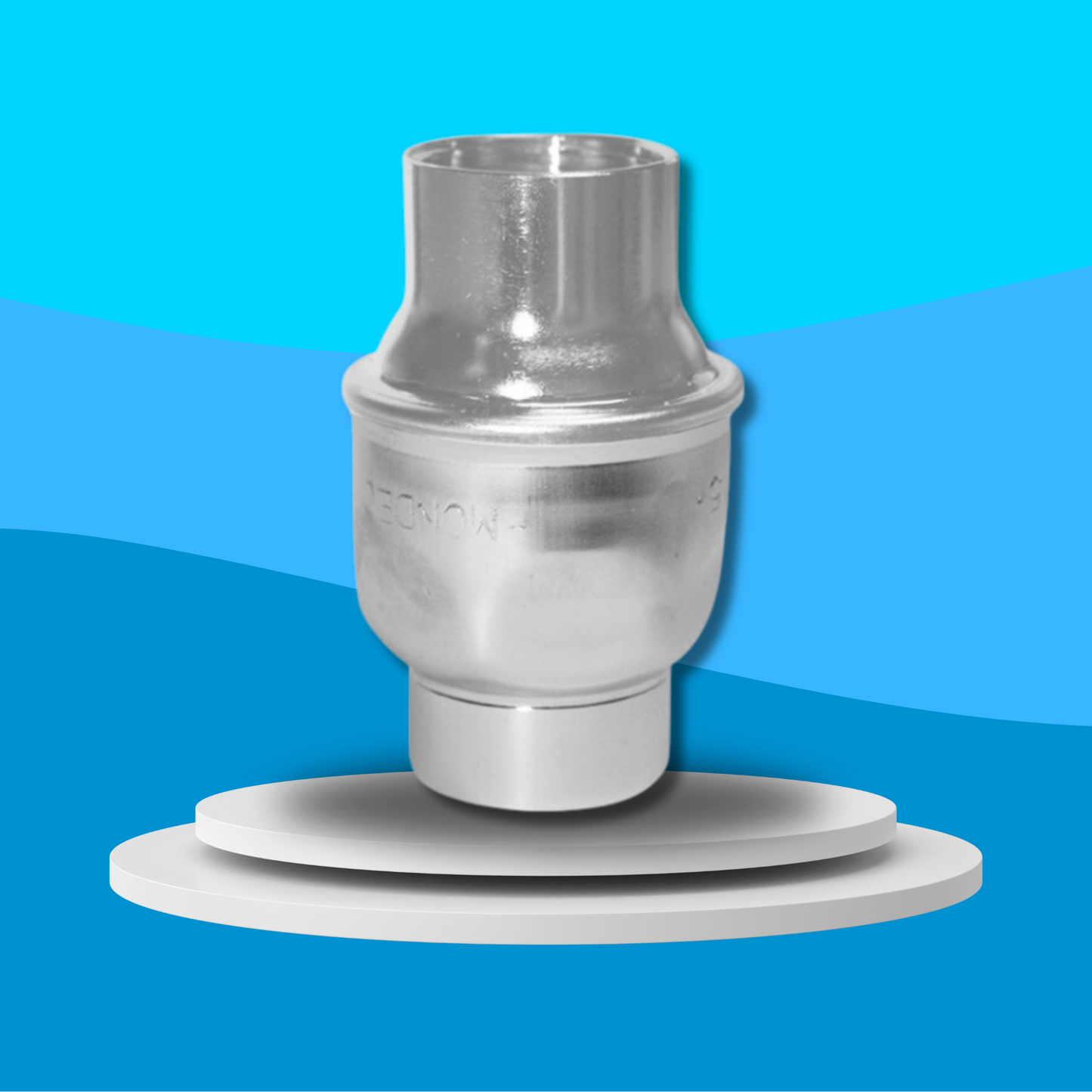Wras Valve
WRAS Approved Stainless Steel EPDM Check Valve
WRAS Approved Stainless Steel EPDM Check Valve
Couldn't load pickup availability
WRAS Certified
Introducing the WRAS Approved Stainless Steel EPDM Check Valve, designed to provide exceptional reliability and performance in water systems. Constructed from high-quality 304 stainless steel, these check valves are built to withstand rigorous conditions, ensuring long-lasting durability and resistance to corrosion. Featuring an EPDM seat, these valves are WRAS approved, guaranteeing safe and compliant use in a variety of water applications, including heating and cooling systems.
Key Features:
- WRAS Approved: Certified to meet stringent WRAS standards for water safety and quality.
- High-Quality Materials: Made entirely from 304 stainless steel for superior durability and corrosion resistance.
- EPDM Seal: Equipped with an EPDM seat for enhanced performance and leak prevention.
- Versatile Application: Suitable for use in heating and cooling systems, as well as other water applications.
- Robust Design: Rated PN16, capable of handling a wide temperature range from -20°C to 110°C.
- Reliable Performance: Engineered for consistent and dependable operation in various water systems.
Specifications:
- Material: 304 Stainless Steel
- Outlet End: 304 Stainless Steel
- Body: 304 Stainless Steel
- Guide Bush: PTFE
- Inlet End: 304 Stainless Steel
- Disc Guide: 304 Stainless Steel
- Spring: 304 Stainless Steel
- Disc: 304 Stainless Steel
- Seal: EPDM
- Seal Housing: 304 Stainless Steel
- Seal Retainer: 304 Stainless Steel
- Seal Support: 304 Stainless Steel
- Inlet Side Guide: 304 Stainless Steel
- Approval: WRAS Approved
- Connection Type: Screwed BSPP
- Temperature Range: -20°C to 110°C
- Pressure Rating: PN16
- Corrosion Resistance: Superior resistance to corrosion and wear
- Application: Heating and Cooling Systems, Water Applications
Share

FAQ's
What is the difference between a valve and an actuator?
What types of actuators are available?
The main types of actuators are:
Pneumatic actuators – use compressed air for fast, reliable operation.
Electric actuators – use electrical power for precise control.
Hydraulic actuators – use fluid pressure for high-torque applications.
Each type offers unique advantages depending on the environment, media, and system control needs.
How do I choose the right actuator for my valve?
To select the correct actuator, consider:
Valve type and torque requirement
Power source available (air, electric, or hydraulic)
Operating environment (temperature, humidity, hazardous area)
Control signal type (on/off or modulating)
Matching actuator torque and compatibility with the valve’s ISO mounting ensures reliable performance.
What are the main types of valves used in automation?
The most common valves in automated systems include:
Ball valves – for tight shutoff and quick operation.
Butterfly valves – for larger flow control with compact design.
Globe valves – for precise throttling and flow regulation.
Check valves – to prevent backflow.
Gate valves – for full bore flow isolation.
What’s the difference between a double-acting and spring-return actuator?
Double-acting actuators use air (or power) to both open and close the valve.
Spring-return actuators use air to open (or close) the valve, and a built-in spring to automatically return it to a safe position when power or air is lost — ideal for fail-safe operation.
How often should valves and actuators be serviced?
Regular maintenance intervals depend on operating conditions, but a good rule of thumb is to inspect every 6–12 months.
This includes checking for leaks, lubrication, seal wear, and actuator responsiveness to prevent unexpected downtime.

